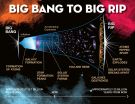(Press-News.org) NASA's Swift satellite detected a rising tide of high-energy X-rays from the constellation Cygnus on June 15, just before 2:32 p.m. EDT. About 10 minutes later, the Japanese experiment on the International Space Station called the Monitor of All-sky X-ray Image (MAXI) also picked up the flare.
The outburst came from V404 Cygni, a binary system located about 8,000 light-years away that contains a black hole. Every couple of decades the black hole fires up in an outburst of high-energy light, becoming an X-ray nova. Until the Swift detection, it had been slumbering since 1989.
An X-ray nova is a bright, short-lived X-ray source that reaches peak intensity in a few days and then fades out over a period of weeks or months. The outburst occurs when stored gas abruptly rushes toward a neutron star or black hole. By studying the patterns of the X-rays produced, astronomers can determine the kind of object at the heart of the eruption.
"Relative to the lifetime of space observatories, these black hole eruptions are quite rare," said Neil Gehrels, Swift's principal investigator at NASA's Goddard Space Flight Center in Greenbelt, Maryland. "So when we see one of them flare up, we try to throw everything we have at it, monitoring across the spectrum, from radio waves to gamma rays."
Astronomers classify this type of system as a low-mass X-ray binary. In V404 Cygni, a star slightly smaller than the sun orbits a black hole 10 times its mass in only 6.5 days. The close orbit and strong gravity of the black hole produce tidal forces that pull a stream of gas from its partner. The gas travels to a storage disk around the black hole and heats up to millions of degrees, producing a steady stream of X-rays as it falls inward.
But the disk flips between two dramatically different conditions. In its cooler state, the gas resists inward flow and just collects in the outer part of the disk like water behind a dam. Inevitably the build-up of gas overwhelms the dam, and a tsunami of hot bright gas rushes toward the black hole.
Astronomers relish the opportunity to collect simultaneous multiwavelength data on black hole binaries, especially one as close as V404 Cygni. In 1938 and 1956, astronomers caught V404 Cygni undergoing outbursts in visible light. During its eruption in 1989, the system was observed by Ginga, an X-ray satellite operated by Japan, and instruments aboard Russia's Mir space station.
"Right now, V404 Cygni shows exceptional variation at all wavelengths, offering us a rare chance to add to this unique data set," said Eleonora Troja, a Swift team member at Goddard.
Ongoing or planned satellite observations of the outburst involve NASA's Swift satellite, Chandra X-ray Observatory and Fermi Gamma-ray Space Telescope, as well as Japan's MAXI, the European Space Agency's INTEGRAL satellite, and the Italian Space Agency's AGILE gamma-ray mission. Ground-based facilities following the eruption include the 10.4-meter Gran Telescopio Canarias operated by Spain in the Canary Islands, the University of Leicester's 0.5-meter telescope in Oadby, U.K., the Nasu radio telescope at Waseda University in Japan, and amateur observatories.
V404 Cygni has flared many times since the eruption began, with activity ranging from minutes to hours. "It repeatedly becomes the brightest object in the X-ray sky -- up to 50 times brighter than the Crab Nebula, which is normally one of the brightest sources," said Erik Kuulkers, the INTEGRAL project scientist at ESA's European Space Astronomy Centre in Madrid. "It is definitely a 'once in a professional lifetime' opportunity."
In a single week, flares from V404 Cygni generated more than 70 "triggers" of the Gamma-ray Burst Monitor (GBM) aboard Fermi. This is more than five times the number of triggers seen from all objects in the sky in a typical week. The GBM triggers when it detects a gamma-ray flare, then it sends numerous emails containing increasingly refined information about the event to scientists on duty.
Every time the GBM recovered from one trigger, V404 Cygni set it off again, resulting in a torrent of emails. The event prompted David Yu, a GBM scientist at the Max Planck Institute of Extraterrestrial Physics in Garching, Germany, to comment on social media: "Achievement Unlocked: Mailbox spammed by a blackhole."
INFORMATION:
Related Links
Swift detects the V404 Cygni outburst
Alert notice from the American Association of Variable Star Observers
NASA's Swift Satellite Discovers a New Black Hole in our Galaxy
June 30, 2015 - Two migraine surgery techniques targeting a specific "trigger site" are both highly effective in reducing the frequency and severity of migraine headaches, according to a randomized trial in the July issue of Plastic and Reconstructive Surgery®, the official medical journal of the American Society of Plastic Surgeons (ASPS).
Patients with temporal-type migraine derive similar and significant improvement from techniques that relieve pressure on (decompression) or remove a portion of (neurectomy) the nerve responsible for triggering their headaches, ...
A new University of Colorado Boulder framework used to screen hundreds of organic chemical compounds used in hydraulic fracturing, or fracking, shows that 15 may be of concern as groundwater contaminants based on their toxicity, mobility, persistence and frequency of use.
Using a fast groundwater transport scenario, the team predicted that 41 of the 659 organic compounds screened would have 10 percent or more of their initial concentrations remaining at a transport distance of roughly 300 feet. That is the average state "setback" distance in the United States between ...
Researchers at University of California, San Diego School of Medicine have discovered a cell signaling pathway that appears to exert some control over initiation and progression of colorectal cancer, the third leading cause of cancer-related death in the United States. A key protein in the pathway also appears to be predictive of cancer survival rates.
The study is reported in the June 30 issue of eLife.
The protein, known as Dishevelled-associating protein with a high frequency of leucine residues or Daple, is produced by nearly all healthy cells in the body and is ...
Brigham and Women's Hospital finds that developing and implementing an interdisciplinary care improvement initiative improves outcomes.
Approximately 20 percent of all patients admitted to a hospital have a mental health condition, either as a primary or a secondary diagnosis, and a recent report by the Institute of Medicine warned that there is a critical shortage of health care professionals who are equipped to provide mental health and geriatric care to these patients in the hospital setting. Often, these patients experience delirium, alcohol withdrawal and suicide ...
The universe can be a very sticky place, but just how sticky is a matter of debate.
That is because for decades cosmologists have had trouble reconciling the classic notion of viscosity based on the laws of thermodynamics with Einstein's general theory of relativity. However, a team from Vanderbilt University has come up with a fundamentally new mathematical formulation of the problem that appears to bridge this long-standing gap.
The new math has some significant implications for the ultimate fate of the universe. It tends to favor one of the more radical scenarios ...
MAYWOOD, IL - In recent years, there has been widespread media coverage of studies purporting to show that radiation from X-rays, CT scans and other medical imaging causes cancer.
But such studies have serious flaws, including their reliance on an unproven statistical model, according to a recent article in the journal Technology in Cancer Research & Treatment. Corresponding author is Loyola University Medical Center radiation oncologist James Welsh, MS, MD.
"Although radiation is known to cause cancer at high doses and high-dose rates, no data have ever unequivocally ...
Poor sleep is associated with negative mood in women with bipolar disorder, according to researchers at Penn State College of Medicine and University of Michigan Medical School.
Bipolar disorder is a brain disorder that causes unusual shifts in mood, energy, activity levels and the ability to carry out day-to-day tasks. The condition is marked by extreme mood episodes characterized as manic (highs) depressive (lows) or mixed.
Sleep problems are common in people with bipolar disorder, and poor sleep quality and bipolar disorder appear to exacerbate each other. Previous ...
Carnegie Mellon University chemists have developed two novel methods to characterize 3-dimensional macroporous hydrogels -- materials that hold great promise for developing "smart" responsive materials that can be used for catalysts, chemical detectors, tissue engineering scaffolds and absorbents for carbon capture.
Researchers working in the lab of Carnegie Mellon Professor Krzysztof Matyjaszewski published their results in the May issue of Advanced Science, with the article featured on the journal's back cover. Their findings are the latest in Matyjaszewski lab's long ...
Bisexual males and females report poorer health than gays, lesbians and heterosexuals, according to a new study from sociologists at Rice University.
"A New Piece of the Puzzle: Sexual Orientation, Gender and Physical Health Status" will appear in an upcoming edition of Demography. The study examined the self-rated health of 10,128 sexual minorities (gay, lesbian and bisexual adults) and 405,145 heterosexual adults to see how it differed across sexual orientation.
"According to the Institute of Medicine, existing health research on the sexual minority population is ...
For centuries, humans have been playing with yeast. But these simple fungal cells usually do their jobs -- making bread rise or converting sugar into alcohol -- without having to communicate or work together.
Now, a team of University of Washington researchers has engineered yeast cells (Saccharomyces cerevisiae) that can "talk" to one another, using a versatile plant hormone called auxin.
In a paper published June 23 in the American Chemical Society's journal ACS Synthetic Biology, the researchers describe a novel cell-to-cell communication system that enables one ...


